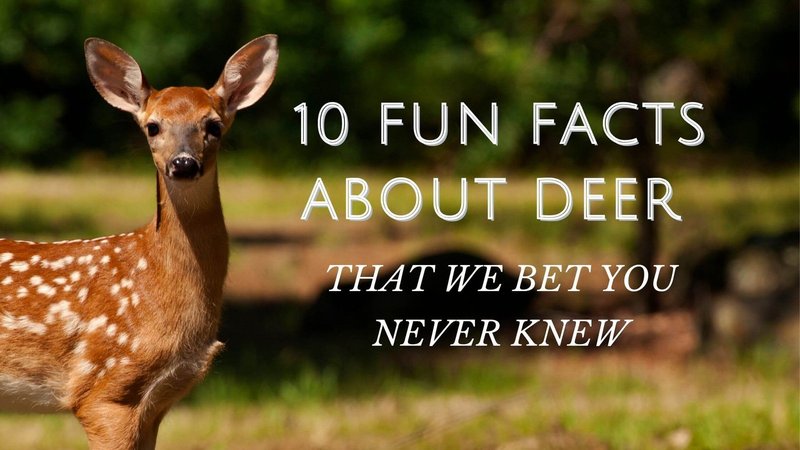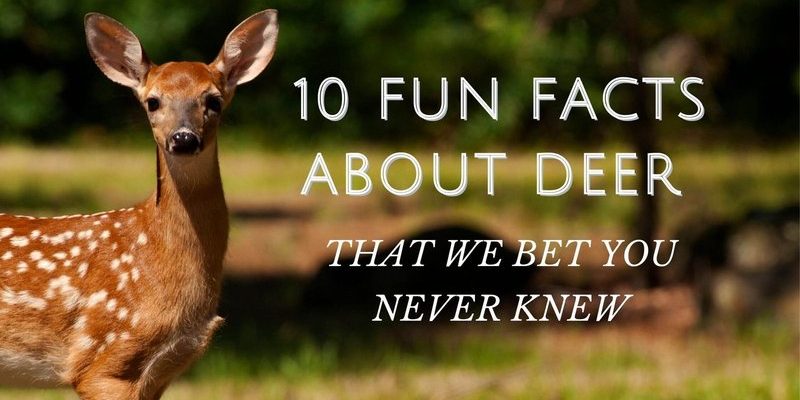
Now, let’s dive into some interesting facts about deer. Imagine we’re sitting together, chatting over coffee, and I’m sharing some tidbits that might just surprise you. These animals have captured human imagination for centuries, and it’s easy to see why. They have a rich history, a wide variety of species, and a ton of unique characteristics that make them stand out in the animal kingdom. So, let me explain some of these fascinating facts that might make you see deer in a new light!
1. There Are Over 90 Different Species of Deer
When you hear “deer,” you might just think of the common white-tailed deer. But here’s the thing: there are actually over 90 different species of deer around the world! From the tiny Pudu—which is the world’s smallest deer and can fit in your lap—to the majestic Moose, which can weigh more than a car, the diversity is truly amazing.
Most deer belong to the family Cervidae, which includes animals like elk and reindeer as well. Each species has its own unique traits and adaptations. For instance, the Reindeer can be found only in Arctic and subarctic regions, and they have specialized hooves that help them walk on snow and ice. Isn’t it wild how different these animals can be, all while sharing the same family tree?
2. Deer Have Excellent Senses
You might be surprised to learn that deer have some of the best senses in the animal kingdom. Their sense of smell is incredibly sharp—up to 30 times better than humans! Imagine being able to sniff out food or detect danger from far away. This keen sense of smell helps them stay safe from predators and find tasty snacks in their environment.
Their hearing is also top-notch. Deer can hear sounds from great distances, allowing them to pick up on subtle noises that might escape our notice. Even their eyesight is impressive. While they don’t see colors the same way we do, they have a wide field of vision that helps them detect movement and potential threats. This mix of senses makes them hard to hunt and superb at surviving in the wild.
3. Antlers vs. Horns: What’s the Difference?
You might have noticed that male deer, called bucks, have antlers, while other animals like goats and cows have horns. But what’s the difference? Antlers are unique to the Cervidae family and are made of bone. They grow each year, typically starting in the spring and shedding in the late winter. During the growth phase, antlers are covered in a soft layer of skin called velvet, which supplies them with blood and nutrients.
Horns, on the other hand, are permanent and made of keratin, the same material as human nails. They don’t shed and grow continuously throughout an animal’s life. Isn’t it interesting how two types of structures serve similar purposes but have such different growth patterns?
4. Deer Are Herbivores with a Unique Digestive System
Deer have a special diet consisting mainly of leaves, fruits, and grasses. Being herbivores means they need to eat a lot to get enough nutrients, which leads us to their fascinating digestive system. Deer have a four-chambered stomach that allows them to effectively break down tough plant materials.
Here’s how it works: when deer eat, they first swallow their food without chewing. Later, they’ll regurgitate that food, a process called rumination, and chew it again to digests it properly. This helps them extract more nutrients from their meals. You might be wondering how they manage to eat so much—well, this unique approach allows them to spend long hours munching and helps them thrive in their natural habitats.
5. Deer Communicate in Various Ways
If you think deer are just silent wanderers in the woods, think again! They have a whole range of communication methods that include vocalizations, body language, and even scent marking. For example, you might hear a doe make soft bleats or grunts to call or reassure her fawns. These sounds can convey all sorts of messages, from warning others of danger to signaling distress.
Body language is equally important. A deer might raise its tail to signal alarm or lower its head in a display of aggression. Additionally, deer leave scent marks to communicate with others about their presence. They have specialized glands that release scents, letting other deer know about their territory or reproductive state. It’s like a secret language that helps them navigate their social lives!
6. They Have a Unique Reproductive Strategy
Deer mating behaviors are pretty intriguing. Most deer species have a defined mating season, commonly known as the rut. During this time, bucks become very active, looking for does. They’ll often engage in displays of strength, like sparring with each other, to attract females.
Once a buck successfully mates with a doe, she typically gives birth to one or two fawns in the spring. What’s fascinating is that fawns are born with spots that help them blend in with their surroundings, providing camouflage from predators. They also have little to no scent during the first few weeks of life, making it even harder for predators to detect them. Isn’t it amazing how nature equips them for survival?
7. Deer Are Important to Ecosystems
If you’ve ever seen a deer grazing, you might not realize just how crucial they are to their ecosystems. As herbivores, they play a big role in plant management. They help control plant growth by grazing on grasses and shrubs, which can prevent overgrowth and promote biodiversity. This process helps maintain a healthy balance in their habitats.
Moreover, deer are part of the food chain as well. Predators like wolves, bears, and even humans rely on deer as a food source. When deer populations are healthy, they contribute to the overall stability of their ecosystem, creating a web of life that supports many other species. It’s a beautiful example of how interconnected nature is!
8. They Have Adapted to Urban Environments
As cities expand, deer have found ways to adapt to urban environments. You might have seen deer walking along suburban streets or munching on garden plants. These animals are incredibly versatile and can thrive in various settings. Urban deer often take advantage of the lack of natural predators and access to reliable food sources, such as landscaping and garbage.
However, this adaptability also comes with challenges. Urban deer can face car accidents and diseases that can spread more easily in crowded areas. Communities are now looking for ways to manage deer populations responsibly, ensuring both wildlife safety and human interests are taken into account.
9. Their Lifespan Can Be Surprising
You might be surprised to learn that deer can live quite long under the right conditions. In the wild, many deer live between 4 to 10 years, depending on their species and environmental factors. However, some have been known to live up to 20 years in protected environments, such as national parks.
Diet, habitat, and predator presence all play significant roles in their lifespan. It’s interesting to think that the same animal you see bounding through the woods could be thousands of years old in a sense, living as part of a lineage that has existed for centuries.
10. They’re Not Just Animals; They’re Cultural Symbols
Throughout history and across cultures, deer have represented various symbols. In many traditions, they symbolize gentleness, grace, and strength. They appear in countless myths, stories, and even art, often regarded as messengers between the material and spiritual worlds.
In Native American cultures, for example, deer are seen as a symbol of love and kindness. In other parts of the world, they may represent fertility and the cycle of life. It’s fascinating how these animals have woven themselves into the fabric of human culture, giving us a deeper appreciation for the natural world.
Closing thoughts:
There you have it—ten fascinating facts about deer that show just how incredible these creatures really are. From their unique physical traits to their crucial roles in ecosystems and cultural symbolism, deer are much more than what meets the eye. So next time you spot one in the wild or even in your backyard, take a moment to appreciate the unique features and characteristics that make them special. They’re truly remarkable animals that deserve our respect and wonder!

